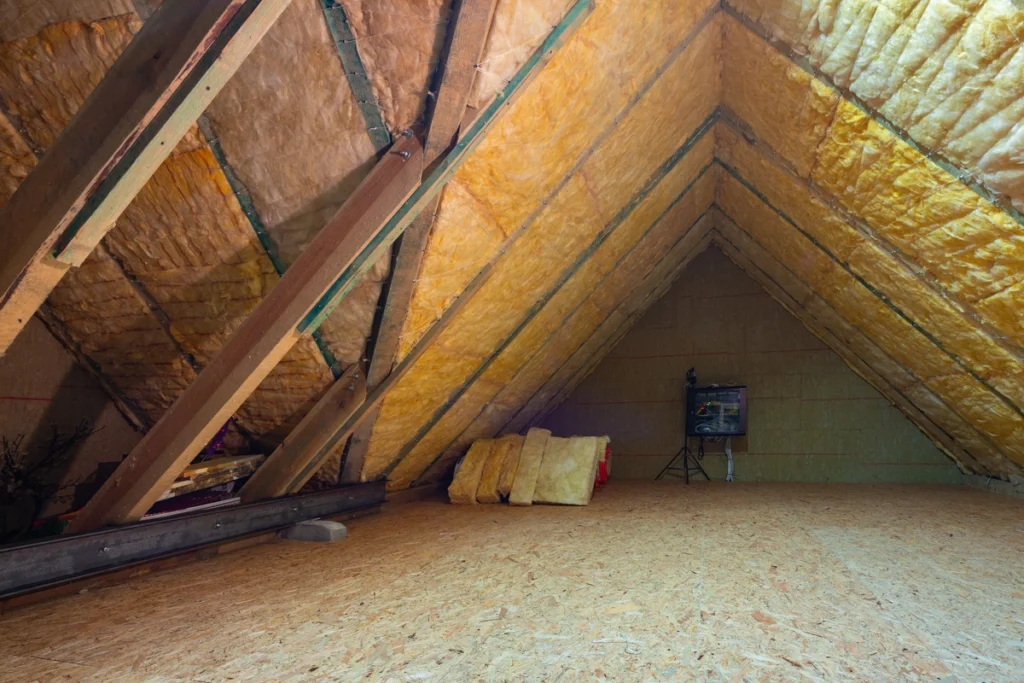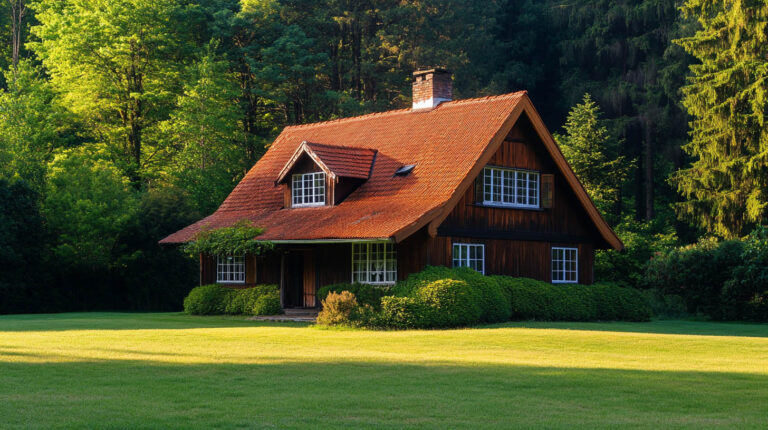
Blog
4 Main Types Of Attic Insulation
Your attic, though often neglected, plays a crucial role in maintaining the comfort and energy efficiency of your home. And at the heart of its effectiveness lies attic insulation.
While it might not be the most glamorous aspect of home improvement, understanding attic insulation is essential for homeowners looking to:
- Save on energy bills
- Enhance indoor comfort
- Prolong the lifespan of their roof
In this guide, we’ll delve into the what, why, and how of attic insulation, exploring its importance, different types, signs of insufficiency, installation costs, its impact on your roof, and when to call in a roofing contractor.
What is Attic Insulation?

Attic insulation is a barrier typically made of materials like fiberglass, cellulose, or foam that is installed in the attic space of a home to regulate temperature and conserve energy. It acts as a buffer between the conditioned living space below and the unconditioned attic space above, helping to prevent heat transfer in both hot and cold climates.
Why is Attic Insulation Important?
The importance of attic insulation cannot be overstated. Here are several key reasons why:
- Energy Efficiency: Properly installed attic insulation reduces the transfer of heat between the interior and exterior of your home, thereby lowering the workload on your HVAC system and reducing energy consumption.
- Cost Savings: By improving energy efficiency, attic insulation can lead to significant savings on heating and cooling bills over time. It’s a worthwhile investment that pays for itself in reduced energy costs.
- Comfort: Adequate attic insulation helps maintain consistent temperatures throughout your home, eliminating cold spots in the winter and hot spots in the summer, thus enhancing overall comfort for occupants.
- Roof Protection: Attic insulation plays a role in preventing ice dams and condensation buildup, which can cause damage to your roof structure and lead to costly repairs.
4 Different Types of Attic Insulation
When it comes to attic insulation, there are several types to choose from, each with its own unique characteristics and benefits:
1) Fiberglass Insulation:
Made from tiny glass fibers, fiberglass insulation is one of the most common types used in attics. It comes in batts or rolls and is relatively easy to install. Fiberglass insulation is cost-effective and offers good thermal performance.
2) Cellulose Insulation:
Cellulose insulation is made from recycled paper products treated with fire-retardant chemicals. It is eco-friendly, offers excellent thermal performance, and is particularly effective at reducing air leakage due to its ability to conform to irregular surfaces.
3) Spray Foam Insulation:
Spray foam insulation is applied as a liquid that expands to fill cavities, cracks, and gaps in the attic space. It provides superior insulation and air sealing properties, making it an ideal choice for attics with irregular shapes or hard-to-reach areas.
4) Reflective Insulation:
Reflective insulation, also known as radiant barrier, is typically made of aluminum foil laminated to paper or plastic substrates. It works by reflecting radiant heat away from the attic, helping to keep the space cooler in hot climates.
Signs of Insufficient Insulation
Identifying signs of insufficient attic insulation is crucial for maintaining energy efficiency and comfort in your home. Here are some common indicators to watch out for:
- High Energy Bills: If your heating and cooling bills are consistently higher than usual, it could be a sign that your attic insulation is inadequate and allowing for significant heat loss or gain.
- Uneven Temperatures: Noticeable temperature differences between rooms or floors of your home may indicate that heat is escaping through the attic due to insufficient insulation.
- Drafts: Feelings of drafts or cold air coming from the ceiling or walls, especially in the winter, suggest that there may be gaps or areas of poor insulation in the attic.
- Ice Dams: Ice dams forming along the eaves of your roof during winter can be a sign of poor attic insulation and ventilation, leading to uneven roof surface temperatures and snow melt.
Cost to Install New Insulation

The cost of installing new attic insulation can vary depending on factors such as the type of insulation, the size of your attic, and the accessibility of the space. On average, homeowners can expect to pay between $1,500 and $2,500 for professional installation of attic insulation in a typical-sized home. While this initial investment may seem significant, the long-term energy savings and improved comfort make it a worthwhile expense for many homeowners.
How Attic Insulation Affects Your Roof
Attic insulation and roofing are closely interconnected, with the condition of one directly impacting the other. Here’s how attic insulation affects your roof:
Moisture Control:
Proper attic insulation helps regulate humidity levels, preventing moisture buildup that can lead to mold growth and rot in the roof structure.
Ice Dam Prevention:
Adequate attic insulation and ventilation reduce the likelihood of ice dams forming on the roof, which can cause water damage and compromise the integrity of shingles.
Roof Lifespan:
By maintaining consistent temperatures in the attic space, insulation helps to prolong the lifespan of roofing materials by reducing thermal stress and preventing premature aging.
Signs You Should Call a Roofing Contractor
While attic insulation plays a crucial role in protecting your roof, there are times when you may need to enlist the help of a professional roofing contractor. Here are some signs that it’s time to make the call:
- Roof Leaks: Water stains on ceilings or walls, missing shingles, or visible signs of roof damage indicate the need for immediate attention from a roofing professional.
- Sagging Roof Deck: A sagging or uneven roof deck may indicate structural issues that require professional assessment and repair to prevent further damage.
- Granule Loss: Excessive granule loss from asphalt shingles can compromise the integrity of your roof and may require repair or replacement by a qualified roofing contractor.
Install Insulation With Avenue
Attic insulation is a critical component of a well-functioning home, impacting energy efficiency, comfort, and the longevity of your roof. But you don’t have to go at it alone! Instead, let Avenue Roofing solve all of your insulation issues. Contact us today to get started.



